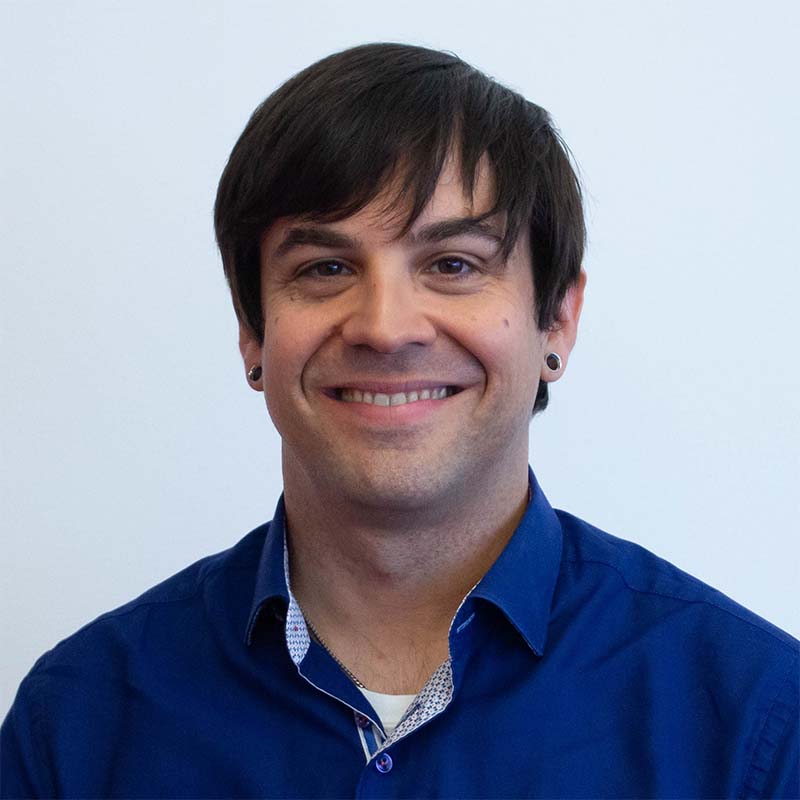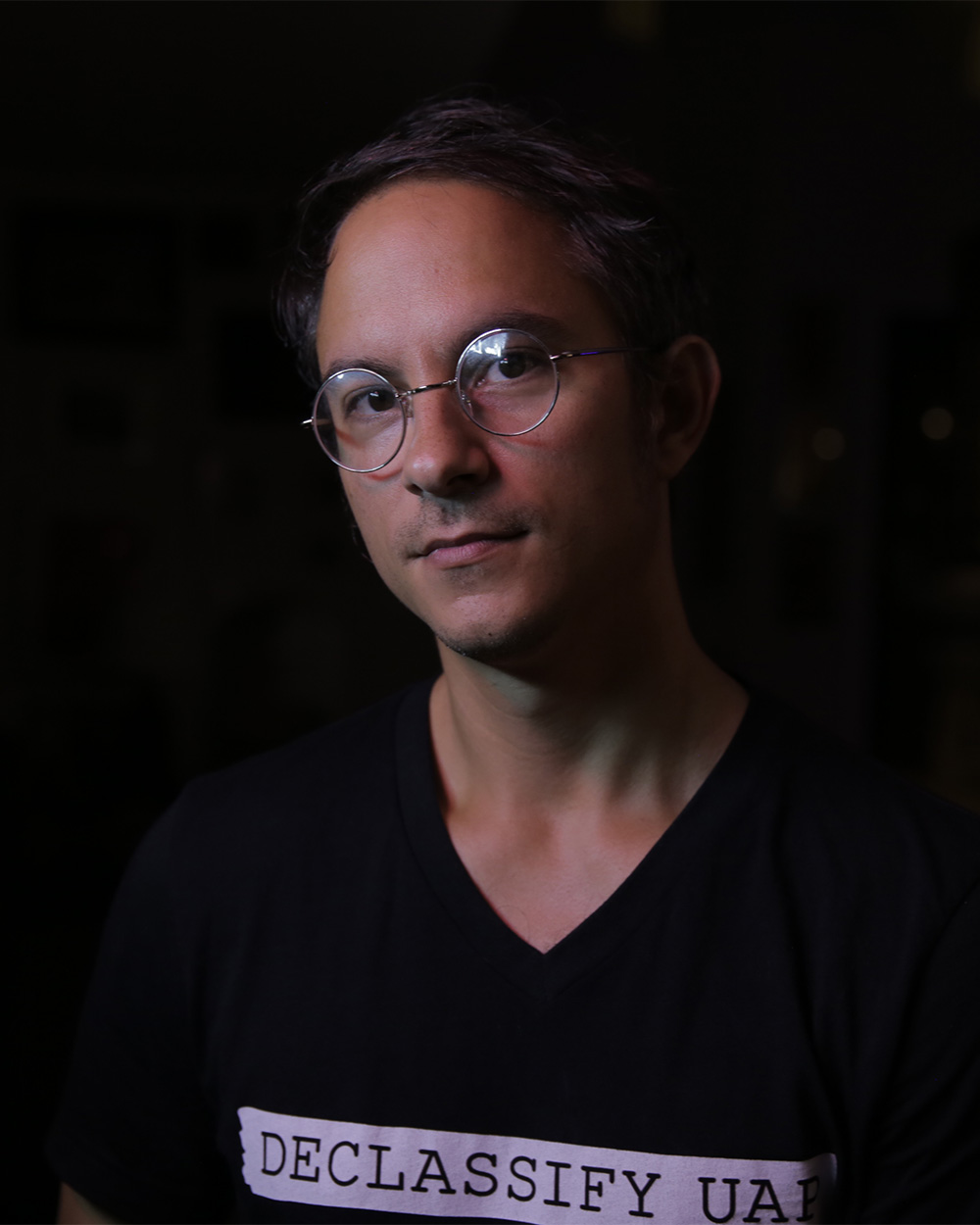Who’s Behind Declassify UAP?
Nick Gold, Founder & UAP Transparency Advocate
Hi, my name is Nick Gold, and I’m the Founder of Declassify UAP. I’m the sole member of Declassify UAP LLC, the organization’s legal entity, which is based in Baltimore, Maryland where I reside. The organization’s launch was exclusively financed out-of-pocket by me.
I think of my role as being a UAP transparency advocate, and an organizer for this cause. I’m a registered Federal lobbyist, doing my best to speak on behalf of American citizens who believe it’s well past time for the US Government to level with the public about this phenomenon, which has fascinated us for generations and refuses to fade away.
I developed an interest in UFOs when I was in elementary school that has stuck with me throughout my life. I’m sure seeing the movie Flight of the Navigator at an impressionable age had something to do with it. The film holds up quite well, and includes a sweet 1980s electronic music and synthwave soundtrack. It features a young Sarah Jessica Parker, and the voice talent of Paul Reubens as a fun-loving UAP artificial intelligence. Who wouldn’t be hooked?
I first got online in the early 1990s while attending junior high school, both through the local BBS scene, as well as the internet and its nascent “social media” of the era: USENET, email lists, MUDs, etc. I connected with internet-based communities of interest surrounding the UFO topic not long thereafter.
I grew up in The Pioneer Valley, Massachusetts. Most of my time in Western Mass. was spent in the small town of Pelham, home to American revolutionary Daniel Shays, instigator of the Shays Rebellion. I also lived in Amherst, just down the street from the home of poet great Emily Dickinson.
I attended Goucher College, located in the Baltimore suburb of Towson. I majored in Communication & Media Studies and minored in Political Science, and graduated with my Bachelor of Arts degree. During college I did a presentation on UFOs for one of my classes, and I believe it was during the research for this presentation I initially came across Project SIGN, the US military’s first official investigation into UFOs from 1949. It was at this point I realized the US Government took UFOs very seriously, and had done so for some time.
While at Goucher, I was able to attend a White House press briefing along with classmates from one of my political science classes. Our professor was friendly with the Deputy Press Secretary at the time, and the experience was a formative moment in cementing my belief that the Federal government is accessible, and is something we have the means to actively engage with.
My career after college has mostly been spent at the intersection of media and technology. One of my first jobs out of college was working for an early neurofeedback and brain-computer interface startup that was co-founded by my computer music professor at Goucher. The company, Neurosonics, had two primary inventions: brain-generated music, a very cool auditory neurofeedback system, as well as a true BCI that used digital signal processing techniques to turn Visual Evoked Potential (VEP) signals derived from EEG readings into an input control mechanism for computers. Well-known inventor and futurist Ray Kurzweil was a supporter of the company, and wrote about it in his book The Age of Spiritual Machines.
I then went on to work for a Baltimore-area IT product testing and support company that provided AppleCare support for Apple and its customers under a contract. During this time Apple was launching major products such as the Mac OS X operating system, the iPod, and Airport wireless networking technology. I began as a front-line Tier 1 support rep, and went on to be promoted into a managerial role as an Apple-Certified Subject Matter Expert.
I was lured away when an opportunity presented itself to join a Baltimore-based company called Chesapeake Systems, now known as CHESA, a leading national video and rich media IT systems integrator. I was familiar with the company, which provided Mac-focused sales and support mostly to creative professionals in the region. At the time I joined, they had recently begun offering Apple and Final Cut Pro-centric video editing, storage, and media management software platforms. Most of my fifteen years with the firm was spent focusing on these types of solutions (which ended up growing well beyond Apple’s own tech stack), and helping CHESA expand in this market.
My roles at CHESA included Director of Business Development, followed by Chief Revenue Officer (leading sales and marketing), and finally culminating with the title Lead Technologist. I wore a number of hats, usually simultaneously, which involved business development, sales, marketing, solutions architecture, consulting, vendor relations, and management.
I got to work with an extraordinarily diverse set of clients in my fifteen years at CHESA, many of whom I initiated the firm’s extensive business relationships with. They included:
-
- National and international broadcasters, studios, production companies, new media companies, and sports teams;
- International news organizations;
- The archive and IT team of a (arguably the) music and entertainment icon;
- Various Federal government agencies, contractors, NGOs, nonprofits, PACs, think tanks, lobbyists, political media companies, and a Presidential campaign;
- Corporations across a variety of sectors;
- Higher educational institutions;
- And many small independent media producers of all stripes (often single or several-person operations).
I enjoyed working with them all, and they taught me the important lesson that all of the organizations we create on this planet have one thing in common: they are all made up of many types of human beings, often working under one roof.
After fifteen years, I decided to take leave of CHESA when I received an offer to work for CATALOG to serve as their Vice President of Marketing. CATALOG is a pioneer in the very new field of synthetic DNA-based data storage and computing technology – using artificially-created DNA molecules to store digital information, and even molecularly perform computation on that data. It was a very unique opportunity that I knew I had to pursue. This was during the roughly year-long period leading up to their successful Series A investment round.
In my time with CATALOG I was able to assist with getting them included in the Time Magazine Best 100 Inventions of 2019, as well as with other coverage and accolades they received. Here’s a presentation I gave on behalf of CATALOG at USC’s Entertainment Technology Center (ETC), and another at The Society of Motion Picture and Television Engineers’ (SMPTE) 2019 Annual Technology Conference, which accepted a paper I wrote that described CATALOG’s DNA-based data storage technology.
After CATALOG successfully landed their Series A round I decided to move on, and have since worked for an IT systems integrator run by a good friend, and a Spanish Media Asset Management (MAM) and workflow automation software vendor, who I concluded a contract with at the end of 2022.
For a number of years I’ve been a member of The Society of Motion Picture and Television Engineers (SMPTE) and The Association of Moving Image Archivists (AMIA). I’m also on the Editorial Board of the Journal of Digital Media Management, in which my writing has been published.
Since 2017 I’ve served as the Program Chair of AMIA’s Digital Asset Symposium (DAS). Artificial Intelligence and linked data (including the overlap between these areas) are two of the main themes I’ve made sure have an ongoing presence at the conference.
Over the past few years, I’ve had the pleasure of taking part in several significant scientific and engineering-oriented organizations focused on UAP. I spent a little over a year with Harvard’s Galileo Project, and am a listed coauthor of the project’s seminal paper on the scientific study of UAP by Watters et al. titled The Scientific Investigation of Unidentified Aerial Phenomena (UAP) Using Multimodal Ground-Based Observatories. I was thrilled that the paper’s lead author Dr. Wes Watters of Wellesley College thought to include some of the thoughts I championed while at The Galileo Project relating to the problems and inadequacies with the terminology associated with UAP/UFOs (including those very terms).
I’m currently a Contributing Member of the Scientific Coalition for UAP Studies (SCU), and mostly assist the organization’s public relations team, which includes helping with the formulation and writing of SCU press releases.
Here’s my LinkedIn page, which serves as the most current and complete version of my resume.
I’ve had a very interesting career, and I feel that it’s set me up pretty well to help support the citizens’ movement for UAP transparency, of which Declassify UAP is but a piece. There are many individuals and organizations, over the decades, who have been, are, and will continue to be part of this process. Declassify UAP and I look forward to working with those who contribute in a productive fashion, so we can once and for all learn what the government knows about this mysterious and elusive phenomenon, “UAP.”
Mike Rezl, Consultant & Moderator
Mike Rezl is a freelance technical consultant and web designer who helped create the Declassify UAP website. He has also created websites for ufologists such as Jacques Vallee, Ryan Sprague of Somewhere In the Skies, and the Youtube channel It’s Redacted.
Mike has been a moderator of r/UFOs, the largest online forum related to ufology, since 2021. He has been moderating on Reddit since 2018. He is the also the creator of UFOS.WIKI, a collaborative guide to ufology and the community resource for the r/UFOs subreddit.
Mike has had a lifelong interest in ufology, with a focus on the nature of non-ordinary experiences and how they might best be integrated towards informing and evolving dominant perspectives. Mike also hosts annual talks related to ufology each year at Burning Man.
More of Mike’s work can be found at MikeRezl.com.



